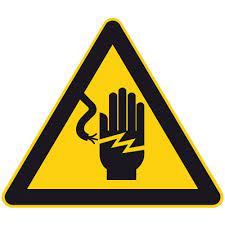
Electrical safety is a critical aspect of every building, whether residential or commercial. Residual Current Devices (RCDs) play a pivotal role in ensuring electrical systems are safe and reliable. In this blog, we will explore what RCDs are, how they function, and why they are indispensable for safeguarding against electrical hazards.
What Exactly Are RCDs?
A Residual Current Device (RCD) is a safety device that automatically cuts off the electrical supply when it detects an imbalance between the live (hot) wire and the neutral wire. This imbalance could occur due to leakage current, which is often the result of a fault in the electrical wiring, such as a short circuit, or if a person comes into contact with a live part.
In simple terms, RCDs act as guardians for electrical circuits, ensuring that if electricity escapes through an unintended path, it is swiftly cut off, protecting both human lives and electrical equipment from potential harm.
The Importance of RCDs in Electrical Safety
RCDs are designed to protect people from the risks associated with electric shock and electrocution. Here’s why these devices are crucial for every electrical installation:
- Prevent Electric Shock: If a person accidentally touches a live wire, the RCD detects the leakage and cuts off the power, preventing potentially fatal electric shocks.
- Fire Prevention: Leakage currents caused by faulty appliances or worn-out cables can lead to fires. An RCD minimizes this risk by detecting these imbalances and cutting off the power supply before a fire can occur.
- Affordable Protection: RCDs are cost-effective devices that can save lives and prevent significant damage to electrical appliances and systems.
Types of RCDs: Which One Is Right for You?
RCDs come in different types, each offering specific functions to suit various applications. Let’s take a look at the most commonly used types:
- Fixed RCDs: These are typically installed in the distribution board and protect multiple circuits. They monitor the entire installation and provide comprehensive protection.
- Socket-Outlet RCDs: These are integrated into the sockets themselves and offer protection for any devices plugged into the socket.
- RCBOs (Residual Current Breaker with Overload): Unlike standard RCDs, RCBOs provide both residual current protection and overload protection, offering a more comprehensive solution for circuits that need additional protection.
Choosing the correct type of RCD is essential for ensuring optimal protection based on your specific needs, whether for residential or industrial applications.
How RCDs Protect Electrical Systems
The primary role of an RCD is to detect any imbalance in the live and neutral conductors. Here's how RCDs ensure safety:
- Leakage Detection: An RCD constantly compares the current flowing through the live wire with that returning via the neutral wire. If the current on both cables is not equal, it indicates a leakage, and the RCD will disconnect the circuit to prevent hazards.
- Instantaneous Response: RCDs react within milliseconds to detect even the most minor leakage of current, providing an almost immediate cut-off to prevent damage or injury.
- Versatile Protection: RCDs are suitable for all types of electrical circuits, from lighting and power circuits to more complex industrial machinery.
Why Should You Install RCDs in Your Electrical System?
Despite being a relatively inexpensive addition to an electrical system, RCDs provide invaluable protection. Here’s why you should consider installing them:
- Legal Requirements: In many countries, electrical regulations mandate the use of RCDs in specific environments, such as bathrooms, kitchens, or outdoor areas, where the risk of electrical shock is higher.
- Protecting Family and Workers: RCDs are especially important in households with young children, elderly individuals, or pets. Similarly, workplaces that involve electrical equipment or tools benefit significantly from the added layer of protection RCDs offer.
- Peace of Mind: Knowing that an RCD is in place gives you peace of mind, reducing the risk of injury, fires, and other electrical hazards.
The Role of RCDs in Modern Electrical Installations
In today’s world, where electrical systems are increasingly complex and interconnected, RCDs offer vital protection in keeping with modern safety standards. Whether for residential, commercial, or industrial setups, RCDs are a key element in electrical design, ensuring that any fault is detected quickly and efficiently.
Furthermore, as more and more devices are integrated into smart home systems and workplaces, RCDs will continue to evolve. Newer technologies and innovations, such as smart RCDs, allow for remote monitoring and control, further enhancing safety and convenience.
Conclusion: Don’t Compromise on Electrical Safety
RCDs are an integral part of any electrical installation, offering crucial protection against electric shock, fire, and equipment damage. With various types like RCBOs and fixed RCDs, these devices provide a versatile and effective solution to safeguard your home, office, or industrial setup.
By ensuring your electrical systems are equipped with RCDs, you not only comply with safety regulations but also significantly reduce the risk of electrical hazards. Investing in RCD protection is an essential step toward maintaining a safe and reliable electrical environment.


































